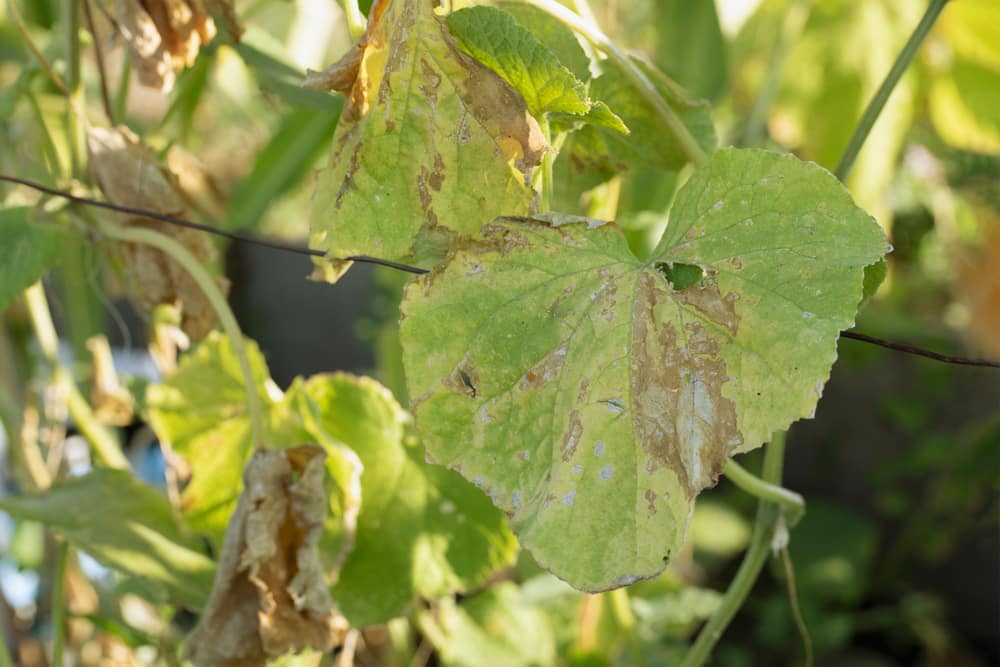Wondering what those white or grey cotton candy-like fluffs on your turf are? Well, we’ll have to blame pythium blight. But is it true that you can use baking soda to get rid of this problem? Stick around to find out.
What is pythium blight?
Pythium blight, also referred to as cottony blight, is a severe fungal disease that greatly damages turf grass, trees and plants.
First sighted and reported in the early 1900s in the United States, this disease was commonly associated with golf courses. Over time, however, it has been established that pythium blight can affect any turfgrass, including home lawns.
Ryegrass and bentgrass are some of the grasses that are most susceptible to pythium blight.
Identifying Pythium Blight
One of the main challenges when it comes to controlling pythium blight is that it can be difficult to identify infected grass. That’s in consideration that the infected grass will, in the morning, look as if it’s wet with dew and has darkly-colored, green slime. Infected grass may, in the initial stages, also appear and feel as if it’s wet and oily.
As the condition aggravates, white or grey mycelium which often looks like cotton candy will be visible on the turf. And if the weather is persistently hot and humid, the damage will be more extensive.
This mainly occurs when daytime temperatures go above 85° F, nighttime temperatures remain above 67° F, and the relative humidity is more than 90% for 15 hours or more. When infected grass is exposed to these conditions, it will brown, wilt, and eventually die.
Where and How to Inspect for Pythium Blight
When inspecting for pythium blight, it’s important to look out for areas that seem to be waterlogged. The disease is often more rampant and damaging on turf that has inadequate drainage.
Also, because pythium blight thrives and is more active in hot and humid weather, it’s important to exercise vigilance in inspections during such periods.
If you’re unable to conduct the inspection during these periods, it’s advisable to look out for brown patches on your turf. These patches are often 3 to 10 inches across, with a circular or irregular shape.
How pythium blight spreads
Pythium blight often spreads through contact. For instance, if you’re walking on infected grass and then you step on healthy turf, you may end up spreading the disease. The same is true for lawn care equipment that comes into contact with infected grass.
Treating pythium blight with baking soda
Baking soda can be used to treat pythium blight. Also known as sodium bicarbonate, baking soda is a natural fungicide that is quite effective in controlling the disease.
How does it work?
Baking soda works by disrupting the pH levels in the plant’s cells, creating an alkaline environment. And since pythium requires a neutral environment to survive, the baking soda solution will effectively kill the fungus.
How to apply baking soda
To use baking soda to treat pythium blight,
Step 1: Mix 3 tablespoons of baking soda with 1 gallon of water.
Step 2: Add in 1 tablespoon of cooking oil such as vegetable oil or another of your choice. This will help the baking soda solution to spread and stick to the leaves better.
Step 3: Add in 2 drops of dishwashing liquid. This will help the baking soda solution and oil to mix more easily. It’s highly recommended that you use a gentle dishwashing liquid that does not contain harmful chemicals. That’s in consideration that you’ll be applying the solution to your turf, and you don’t want to damage soil life in any way
Step 4: Spray the solution on the affected areas. Make sure to coat the leaves thoroughly.
Useful tip: Start with 3 tablespoons of baking soda one time each week and do it continuously over a period of 2 weeks. If the fungus is still present and/or spreading, increase the amount of baking soda to 3 1/2 tablespoons, during each application.
Preventing pythium blight
The best way to control pythium is by preventing it from occurring in the first place. Some of the preventive measures you can take include:
1. Aerate your turf regularly to loosen the soil and avoid thatch build-up, which can promote the disease.
2. Apply Mefenoxam 2AQ to prevent the disease before it attacks. Use intervals of 10 to 21 days for best results. An interval of 14 days is recommended during prolonged conditions.
3. Do not over-water your turf. You can water early in the morning so that the leaves have time to dry before nightfall. The optimal amount of water for your turf should be 1 to 2 inches per week.
4. Try to remove as much thatch as possible from your turf. Thatch contributes to providing a perfect environment for the disease to spread.
Concluding thoughts
Baking soda is, indeed, an effective and natural treatment against pythium blight. However, it’s always best to take preventive measures so that you can avoid the disease altogether. Regular aeration, proper watering, and removing thatch can go a long way in preventing pythium blight.

